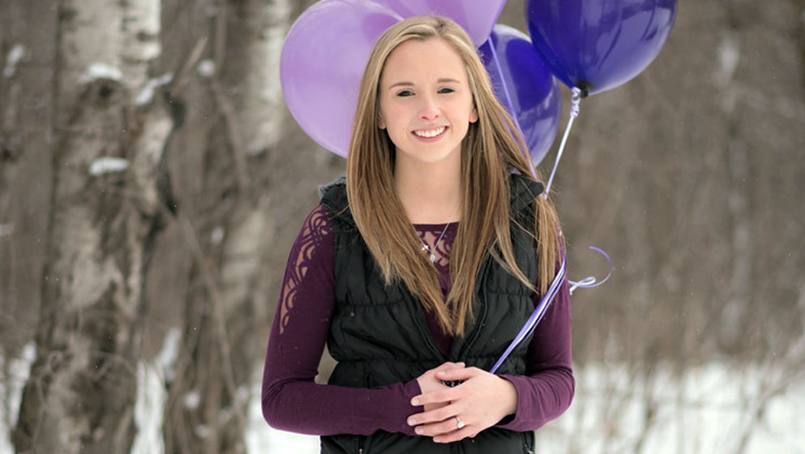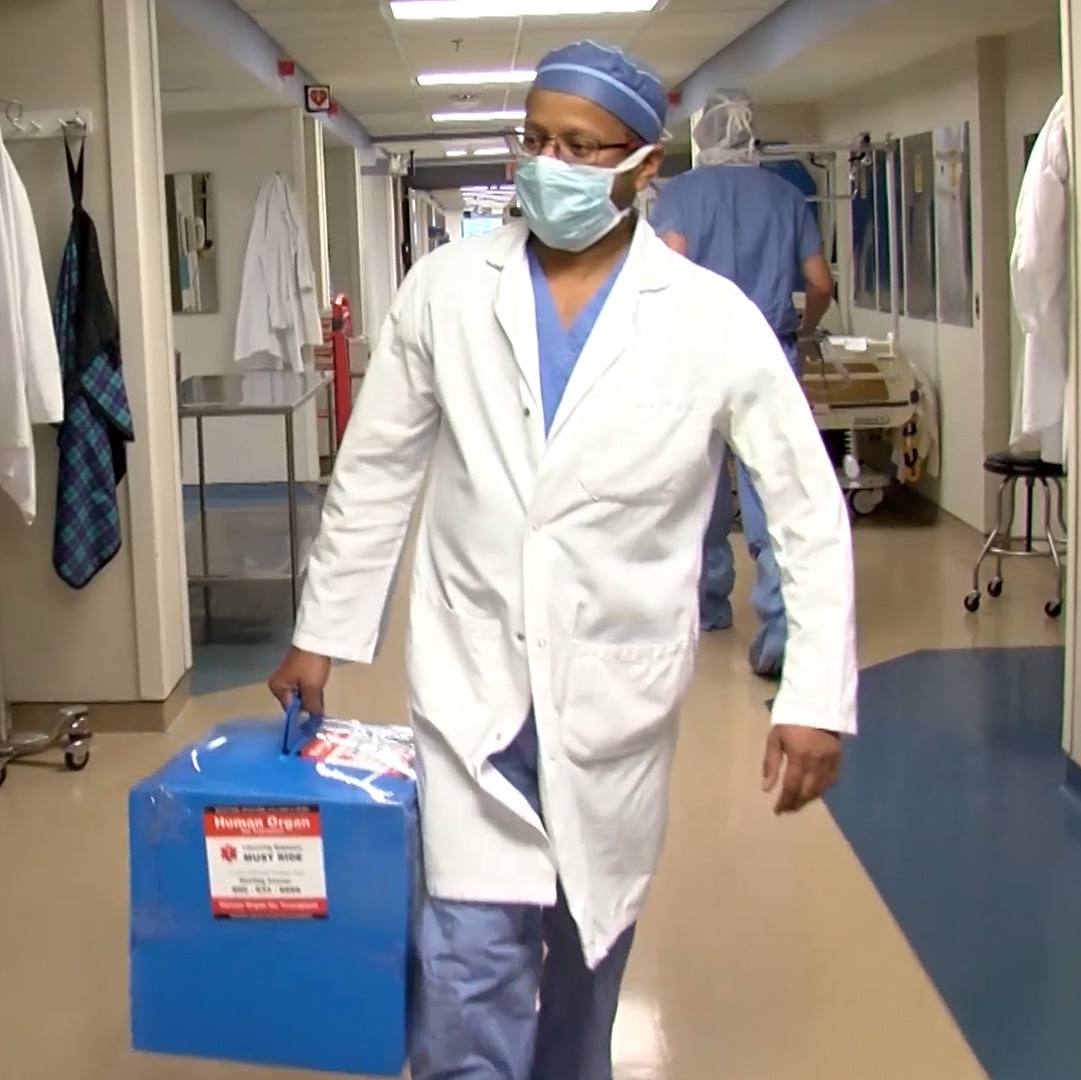-
Featured News
Sharing Mayo Clinic: Brain malformation spurs Nikki to reach out to others
 Oct. 23, 2015, is a date that Nikole Prins will always remember. It’s the day she finally learned the reason for the bizarre symptoms she had been dealing with for more than half her life. Nikki precisely recalls the time she heard the news. It was 1:24 in the afternoon when her doctor called with the results of an MRI she had the previous day.
Oct. 23, 2015, is a date that Nikole Prins will always remember. It’s the day she finally learned the reason for the bizarre symptoms she had been dealing with for more than half her life. Nikki precisely recalls the time she heard the news. It was 1:24 in the afternoon when her doctor called with the results of an MRI she had the previous day.
“I was diagnosed with Chiari malformation,” says Nikki, who lives in Owatonna, Minnesota, and received care at Mayo Clinic Health System in Owatonna. “No one wants to be told at 21 that you have a brain malformation. I cried a lot.”
For years, Nikki had experienced a range of symptoms that included lightheadedness, fainting and extremities that tingled when she stood up, as well as migraines that got worse while she was standing. As a preteen, she was told she was having syncope episodes when she got lightheaded. Later, physicians made the diagnosis of postural orthostatic tachycardia syndrome. But neither diagnosis nor any treatment had an effect on her symptoms.
In the fall of 2015, her incidences of passing out were followed by a total loss of feeling in her limbs. She was also having problems breathing and swallowing, and she noticed odd fluctuations in her voice. It was then Nikki decided to ask her family practice physician to investigate further. He recommended the MRI that uncovered the true cause of Nikki’s symptoms.
“Chiari malformation isn’t an easy diagnosis to take on,” Nikki says. “People find themselves alone in that kind of diagnosis, and it’s important to me that people get the proper care because it can go wrong. I’m in so many Chiari support groups, and I’ve heard many stories where people end up in the wrong hands and something takes a turn for the worse.”
Reassuring care
Of the three types of Chiari malformation, Nikki was diagnosed with type 1, which is the most common and least severe. It usually develops in late childhood or early adulthood. Chiari malformation is estimated to occur in about one in 1,000 births. It happens when the lower portion of part of the brain called the cerebellum extends into the bony opening of the spinal canal that’s meant for the spinal cord. As a result, spinal fluid builds up, putting pressure on the brain and brain stem. That leads to problems with balance, coordination and movement.
After she was diagnosed, Nikki was directed to the Department of Neurology at Mayo Clinic’s Rochester campus, where she met with a neurologist and with neurosurgeon Grant Mallory, M.D. Within 10 minutes of meeting Dr. Mallory, Nikki was informed that surgery was imperative. While she was initially skeptical, Dr. Mallory’s bedside manner and his ability to convey facts in a relatable way convinced Nikki that she was in the right place.
“I can’t say enough about Dr. Mallory. He was phenomenal,” Nikki. “I trusted him with everything, and I still do.”
“Everyone was really good about being personable when they talked to me. They were really sensitive about how they said everything.” – Nikki Prins
In early January 2016, Nikki underwent a type of brain surgery called a suboccipital craniectomy. Surgeons removed part of the bottom of Nikki’s skull and a portion of her first cervical vertebra. The dura matter — the outermost membranes surrounding the brain and spinal cord — was opened and a bovine patch was sewed in to give the brainstem more space.
Nikki was discharged two days after her surgery, hopeful that the treatment would put an end to her problems with head pain, numbness and breathing. But not quite two weeks later, she awoke with a debilitating migraine.
“I thought it would get better through the day. I was still on leave from work, so I just took the day to take it easy,” Nikki says. “Finally at 5 p.m., I was trying to fold laundry, and I ended up passing out on my couch.”
Nikki called her mom, Karla Prins, who drove her to the hospital in Owatonna. At the emergency room, doctors put Nikki in an ambulance and sent her to Rochester, where she was immediately admitted. Her care team found that Nikki had contracted a staph infection at the incision site. In addition, the inflamed and swollen wound was leaking spinal fluid.
Setbacks and solutions
A second surgery was necessary, but first Nikki’s infection had to be addressed. A culture of the infection yielded a diagnosis of methicillin sensitive staph aureus, or MSSA. Nikki received alternative antibiotics to combat it, and the next day, she underwent surgery. Surgeons washed out the wound and replaced the bovine patch with collagen.
A lumbar puncture, or spinal tap, was also conducted as a cautionary measure to check for meningitis — an inflammation of the membranes surrounding the brain and spinal cord. The test was negative for any additional infections, but Nikki was outfitted with a PICC line and given an intravenous antibiotic. With directions to continue the IV therapy as an outpatient, Nikki was discharged after five days.
“I felt like a human pincushion,” Nikki says. “I thought I was going to have one IV during surgery, but I ended up having 23.”
On Feb. 17, the PICC line was removed. Nikki attempted to pick up where her life had left off. And she did — for three weeks.
“On March 6, I sprung a spinal fluid leak,” Nikki says, explaining that the event was more annoying than painful. This time, the fluid draining from the incision site was trickling outside of her body and covered two towels with spinal fluid.
“A lot of people don’t know what the next steps should be and some people think there are only a few doctors who know about Chiari. But that’s not the case because I went to a place where they know a ton.” – Nikki Prins
“I called the clinic at Rochester and said, ‘I need someone to get Dr. Mallory to call me,’” Nikki says. “So he calls me back and says, ‘What’s going on?’ And he’s really funny, and he’s always liked to joke around with me, so I said, ‘Well, I’m leaking from my neck.’ And he said, ‘Well, that’s not good!’”
He directed Nikki to get back to the hospital in Rochester, where she was prepped for a third operation. During that procedure, Nikki’s wound was again cleansed. Her surgeons replaced the collagen patch with a fascial graft from her thigh and also inserted a lumbar drain to prevent future leaks. Five days later, Nikki was released from the hospital.
On April 1, she was cleared to go back to work, Nikki says, adding that Dr. Mallory jokingly told her that he didn’t want her coming back to see him unless it was for a social visit.
“Everyone was really good about being personable when they talked to me. They were really sensitive about how they said everything,” Nikki recalls. “It was a really sensitive time for me and for my parents.”
Empowered through education
While Chiari malformation may cause progressive and debilitating symptoms, they often can be halted and even improved with surgery. And rather than embarrassment or fear about her diagnosis, Nikki has embraced her future and hopes her success story helps others with Chiari malformation. She encourages people affected by the disorder to learn more, seek out resources, and connect with others through organizations such as Conquer Chiari.
“A lot of people don’t know what the next steps should be, and some people think there are only a few doctors who know about Chiari. But that’s not the case because I went to a place where they know a ton,” she says.
“It really does matter where you go with this malformation,” Nikki says. “You’re going to find yourself with a little bit of frustration just because of the condition, but don’t give up. Keep fighting and finding the doctors that you’re comfortable with and who can communicate with you on the same level.”
HELPFUL LINKS
- Learn more about Chiari malformation.
- Read about the departments of Neurology and Neurosurgery at Mayo Clinic.
- Connect with others talking about Chiari malformation on Mayo Clinic Connect.
- Explore Mayo Clinic Health System in Owatonna.
- Request an appointment.







